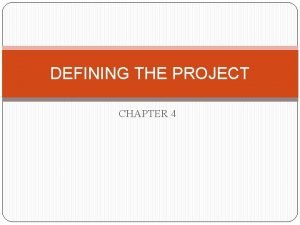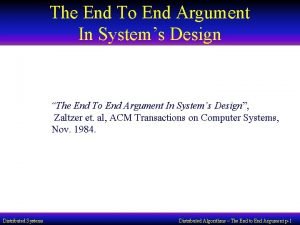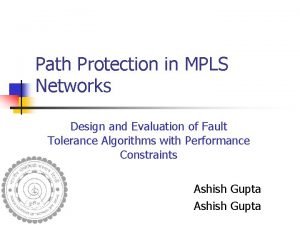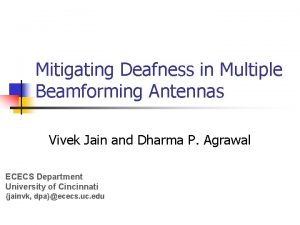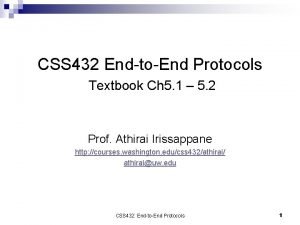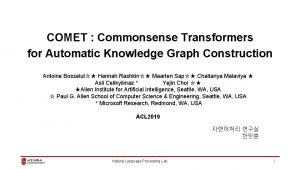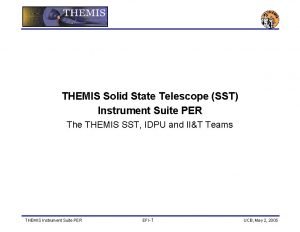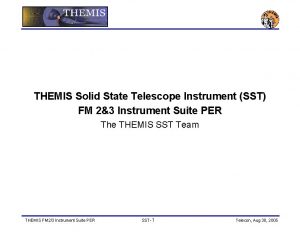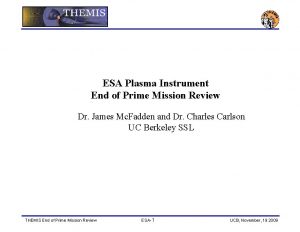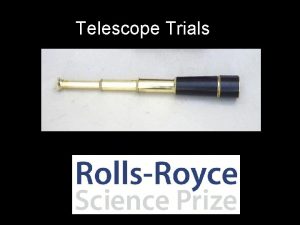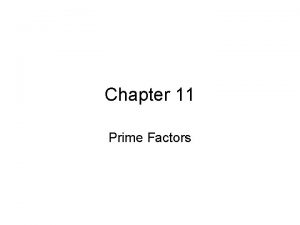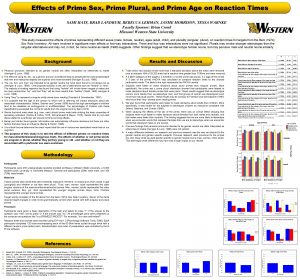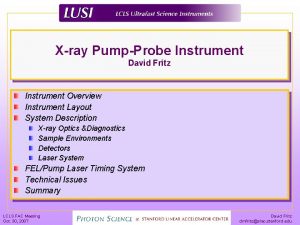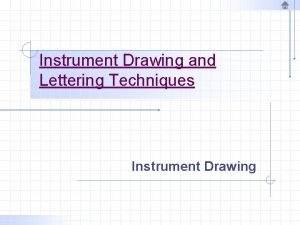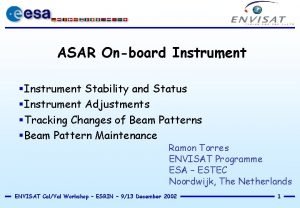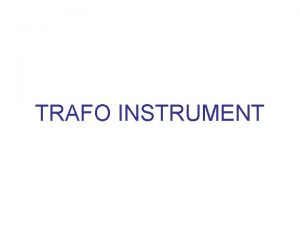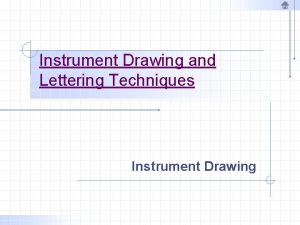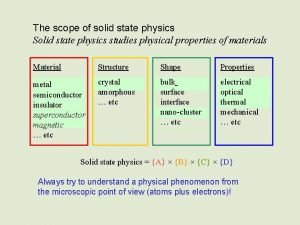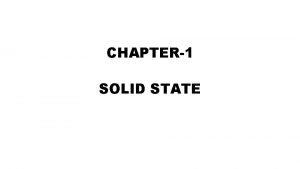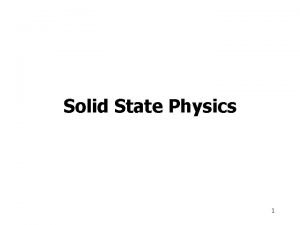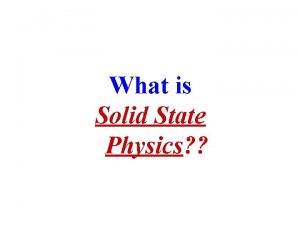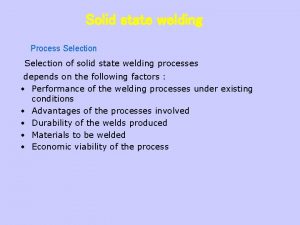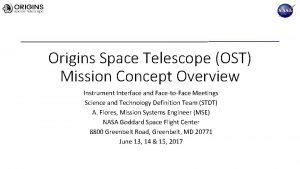Solid State Telescope Instrument End of Prime Mission
























- Slides: 24

Solid State Telescope Instrument End of Prime Mission Review Dr. Davin Larson UC Berkeley SSL THEMIS End of Prime Mission Review SST-1 UCB, November, 19 2009

Requirements and Specifications Measurement • The SST instrument measures 3 -D electron and ion energy distribution functions over the Energy range 30 Ke. V to ~1 Me. V. • A full 4 -pi distribution measurement is produced during each spin • Raw measurements are compressed to selectable “reduced distributions” and moments Implementation • 2 Pairs of double ended Triplet Stack of electrostatic analyzers have 180 degree field of view • Field of view is divided into 16 phi sectors and 4 elevation bins • SST detectors have configurable energy, angle and time resolution. These functions are set by command. • Higher level data formatting and computed products are carried out in the ETC board. • Default Energy table is approximately logarithmic. SST Instrument continues to operate and continues to produce data products. However there is some degradation of ion detectors. The ion sensor degradation primarily affects 2 probes (P 1 and P 2). THEMIS End of Prime Mission Review SST-2 UCB, November, 19 2009

SST Principle of operation Electron Side Ion Side Foil Detector Thick Detector Open Detector Al/Polyamide/Al Foil (4150 Ang thick –stops Protons < 350 ke. V) electrons ions electrons Foil Collimator Open Collimator Attenuator • Sensor similar to Wind 3 DP – Triplet detector stack in double ended telescope • • Sm-Co Magnet ~1 k. G reflect electrons <350 ke. V Foils filter out low energy ions Broom magnets sweep out low energy electrons Energetic particles will penetrate outer detectors and produce coincidence events. Attenuator paddles flip into place to lower geometric factor in inner magnetosphere. THEMIS End of Prime Mission Review SST-3 UCB, November, 19 2009

Block Diagram • • • Electronics functional design is similar to Stereo STE Amptek 225 FB used as preamplifier in sensor head. PHA circuitry on DAP board in the IDPU Signal chain: 1 of 12 channels shown Bias Voltage Test Pulser DAC Thresh Gain PD A 225 F Preamp Shaper ADC Memory BLR DFE Board THEMIS End of Prime Mission Review FPGA Coincidence Logic & Accumulators DAP Board SST-4 UCB, November, 19 2009

SST efforts to facilitate data analysis • SST data is available within 24 hrs after collection on the THEMIS Website: • Summary Plots with SST data at: http: //themis. ssl. berkeley. edu/summary. shtml? autoload=1 • SST instrument paper (in preparation) : • Instrument description at: http: //themis. ssl. berkeley. edu/instrument_sst. shtml THEMIS End of Prime Mission Review SST-5 UCB, November, 19 2009

Mission Requirements REQUIREMENT SST DESIGN IN-1. The Instrument Payload shall be designed for at least a two-year lifetime Compliance. All 10 Sensors functioning after 2. 5 years. IN-2. The Instrument Payload shall be designed for a total dose environment of 33 krad/year (66 krad for 2 year mission, 5 mm of Al, RDM 2) Compliance. No evidence of radiation degradation of the electronics. Some degradation of detectors possibly due to low energy (30 -100 ke. V) ion implantations. IN-3. The Instrument Payload shall be Single Event Effect (SEE) tolerant and immune to destructive latch-up Compliance. No known SEEs or latch-ups of the SST sensors or electronics. IN-7. No component of the Instrument Payload shall exceed the allocated mass budget in THM-SYS-008 THEMIS System Mass Budget. xls Compliance. No mass budget problem. Sensor: 554 gm x 2 (Measured) Harness: 141 gm x 2 (1. 73 meter) (DAP Board tracked with IDPU) IN-9. No component of the Instrument Payload shall exceed the power allocated in THM-SYS-009 THEMIS System Power Budget. xls Compliance. No power problems during 2. 5 years. DFE + DAP: 1200 m. W (Estimate @ 10 k. Hz count rate) IN-13. The Instrument Payload shall survive the temperature ranges provided in the ICDs Compliance. No observed anomalies during eclipse. IN-14. The Instrument Payload shall perform as designed within the temperature ranges provided in the ICDs Compliance. No SST temperature problems. THEMIS End of Prime Mission Review SST-6 UCB, November, 19 2009

Mission Requirements REQUIREMENT SST DESIGN IN-16 The Instrument Payload shall comply with the Magnetics Cleanliness standard described in the THEMIS Magnetics Control Plan Compliance. SST complied (with expanded budget) and experienced no magnetic problems. <2 n. T @ 2. 5 meters. 11 Hz FGM noise first attributed to SST was found to be due to aliasing of digital noise in the IDPU IN-17 The Instrument Payload shall comply with the THEMIS Electrostatic Cleanliness Plan Compliance. SST complied and experienced no electrostatic cleanliness problems. IN-18 The Instrument Payload shall comply with the THEMIS Contamination Control Plan Compliance. SST complied and experienced no contamination problems. IN-19. All Instruments shall comply with all electrical specifications Compliance. SST complied and experienced no electrical problems. IN-20. The Instrument Payload shall be compatible per IDPU-Instrument ICDs Compliance. SST was compatible and experienced no communication problems with the IDPU and ETC table loading problems were resolved during commissioning phase prior to first tail season. IN-21. The Instrument Payload shall be compatible per the IDPU-Probe Bus ICD Compliance. SST was compatible. IN-23 The Instrument Payload shall verify performance requirements are met per the THEMIS Verification Plan and Environmental Test Spec. Compliance. SST performance met the Verification Plan and Environmental Test Specification. IN-24 The Instrument Payload shall survive and function prior, during and after exposure to the environments described in the THEMIS Verification Plan and Environmental Test Specification Compliance. SST survived all pre-launch testing and continues to function. THEMIS End of Prime Mission Review SST-7 UCB, November, 19 2009

Science Requirements REQUIREMENT SST DESIGN IN. SST-1. The SST shall perform measurements of the tailward-moving current disruption boundary speed using the finite gyroradius technique Compliance. Provided by Full Distribution Functions (FDFs). Technique used in paper by (provide reference) IN. SST-2. The SST shall measure the time-of-arrival of superthermal ions and electrons of different energies emanating from the reconnection region to determine RX onset time. Compliance. 3 second time resolution of FDFs IN. SST-3. The SST shall obtain partial moments of the plasma electron and ion distributions in the magnetotail plasma sheet Compliance. Partial moments produced by ETC board but are of limited quality for ions. Higher quality partial moments are computed on the ground. IN. SST-4. The SST shall obtain measurements of ion and electron distribution functions with one spin resolution (<10 sec required) Compliance. Full electron distribution functions at 1 spin resolution obtained in burst mode. Full ion distribution function at 1 spin res are produced in fast survey. IN. SST-5. The SST shall measure energetic electron fluxes as close to Earth as 6 RE geocentric, at all local times. Compliance. Attenuator lowers flux sufficiently to avoid saturation at this distance. All Attenuators are functioning nominally after 2. 5 years IN. SST-6. The SST shall measure energetic ions in the solar wind, at the magnetopause and in the magnetosheath. Compliance. As above when sensors are operating THEMIS End of Prime Mission Review SST-8 UCB, November, 19 2009

Science Requirements REQUIREMENT SST DESIGN IN. SST-7. The SST shall measure energetic particles over an energy range of 30 -300 ke. V for ions and 30100 ke. V for electrons found in the magnetotail plasma sheet. Compliance. Electrons: ~30 ke. V to ~800 ke. V Ions: ~30 ke. V to ~6 Me. V IN. SST-8. The SST energy sampling resolution, d. E/E, shall be better than 30% for ions and electrons. Compliance. Intrinsic energy resolution is ~6 ke. V with 1. 5 ke. V binning. Measured full system resolution is 8 ke. V @ 30 ke. V IN. SST-9. The SST shall be capable of measuring differential energy flux in the range from: 10^2 to 5 x 10^6 for ions; 10^3 -10^7 for electrons (ke. V/cm 2 -s -st- ke. V) whilst providing adequate counts within a 10 second interval. Compliance. Max counting rate estimated at 50, 000 cps (per detector). Two geometric factors: G 1 ~ 0. 1 cm 2 -ster G 2 = G 1/64. Dead time correction required for R>20, 000 cps IN. SST-10. The SST shall measure over 90 deg. in elevation with a minimum resolution of 45 deg. Compliance. Elevation: +/- 60 deg, Resolution: ~37 deg. IN. SST-11. The SST shall have an azimuthal resolution of 45 deg. Compliance. Azimuthal resolution = 22. 5 deg IN. SST-12. The SST shall supply the high energy partial moments at one spin time resolution. Compliance. Performed by ETC board IN. SST-13. SST calibration shall ensure <20% relative flux uncertainty over the ranges defined above. Partial Compliance. Measured pre-flight; In-flight calibration has shown changes in ion calibration, primarily caused by increased dead layers over time. THEMIS End of Prime Mission Review SST-9 UCB, November, 19 2009

SST ESA Electrons SST ESA Ions THEMIS End of Prime Mission Review SST-10 UCB, November, 19 2009

Applying Electron Scattering Correction SST flux Uncorrected SST flux Corrected ESA SST Model Maxwellian THEMIS End of Prime Mission Review SST-11 UCB, November, 19 2009

Electon Efficiency correction for E>300 ke. V Accounting for high energy efficiency. Uncorrected We know there is a substantial difference in measured flux as compared with LANL! (~8) Slightly higher flux at high energy THEMIS End of Prime Mission Review SST-12 UCB, November, 19 2009

Bremsstrahlung Background Energetic electrons measured by the SST detectors produce Xrays that contaminate the ion ESA measurement. Electrons Moment calculations without removal of this background will overestimate ion density (green). Simple background removal algorithms (black) help, but still do not provide good agreement with electron density (red). Ions THEMIS End of Prime Mission Review SST-13 UCB, November, 19 2009

Solid state detectors only measure the energy deposited in the active (depleted) region of the silicon Dead Layer (thickness grows in time) Charged Particle track As the dead layer grows in time all energy channels shift to higher energy During the first 9 months after launch we noticed a gradual reduction in signal, primarily in 3 of 20 ion detectors (1 on Probe. B, 2 on Probe-C) Somewhat mitigated by increasing bias voltage THEMIS End of Prime Mission Review Ionization charges only Collected from Depleted region Electric field SST-14 Distance UCB, November, 19 2009

Correcting for increase in Dead layer Themis E is shown Themis B&C have much more severe damage Ion Distribution Uncorrected Corrected All energies Shifted up 6 ke. V THEMIS End of Prime Mission Review SST-15 UCB, November, 19 2009

Caveats when using SST data Saturation at high count rates (>20 k. Hz/channel) Sun Pulse • • • Once per spin Affects all channels Easily removed if FULL dists are used Low energy electron geometric factor caused by scattering by foil Ion detectors – Increasing Dead layer vs time. Cross Species contamination • Only important when flux of >400 ke. V particles becomes significant (inner magnetosphere) Attenuator state (64 x) • • Closed within inner magnetosphere (<10 Re) Controlled by count rate in outer MS We know there is a substantial difference in measured flux as compared with LANL! (~10) THEMIS End of Prime Mission Review SST-16 UCB, November, 19 2009

SST Lessons Learned • • • • TEST – TEST! And then test some more. Consider all possible failure modes. Set up GSE that will record all instrument data as well as laboratory environmental data (i. e. vacuum pressure, temperature, input voltages and currents) so that if a problem occurs the experimenter can go back and find the cause. Automate test routines so that they can be repeated identically and quickly. Avoid human input. Be more selective when choosing detectors. Monitor many detectors over a long time interval (months) and then pick the best ones that show no change over time. Leave equipment running (and recording) throughout thermal-vac testing. Perform tests at all temperatures, not just the extremes. Ignore any concerns about instruments running while not “monitored” by a human. Conducting (aluminum) tape does not work well in vacuum. Don’t do initial instrument turn-on while in the radiation belts. (or if you do – at least know that the instrument is in the radiation belt) Check (and test) polarity of all polarized capacitors on all boards. Don’t assume the circuit board was printed correctly. (This is a very common problem!) Thoroughly test instrument for light sensitivity. Test for noise contamination early. Measure and/or account for in-rush current at instrument turn-on. Watch out for large preamp current draw during saturation events. Build at least two of every unit, even if you only need one unit. Built in test electronics simplifies in-flight instrument monitoring. Two electron sensors looking in opposite directions are essential for accurate Ve measurements when density fluctuations are present. Combined plasma measurements (ESA+SST) are required for correct plasma moment calculations. THEMIS End of Prime Mission Review SST-17 UCB, November, 19 2009

Publication History and Data Maturity THEMIS Papers utilizing SST Data: • List in formulation (Vassilis has this). Data Analysis Software and Products • • • SST raw and level 2 data available within ~24 hrs of collection. Data analysis tools available to all, regular improvements to software. Electron Level 2 data will be soon regenerated to account for foil efficiency. Ion Level 2 data will be regenerated to account for degradation of ion sensors. Data will continue to improve with age like a good bottle of wine. THEMIS End of Prime Mission Review SST-18 UCB, November, 19 2009

Future Improvements SST Data Work in Progress or planned work • • • In flight calibration of ion sensors Placing new electron calibrations in public source Modeling of SST sensor head using GEANT 4 Removal of cross contamination between electron and ion channels in inner Magnetosphere Improved dead time corrections New software algorithms for more accurate moments (combining ESA and SST partial moments) THEMIS End of Prime Mission Review SST-19 UCB, November, 19 2009

Summary Performance SST Prime mission requirements • • No major failures during prime mission Degradation of 3 out of 20 ion detectors was much greater than expected (possibly due to radiation damage but cause not known for certain) All data is valid for timing analysis SST met nearly all mission and science requirements SST met most performance requirements SST team has provided software and preliminary calibrated data Over ? papers with SST data published SST Current Status • • All sensors continue functioning All attenuator mechanisms are working well Final calibrations are still in progress No noticeable increase in background noise since launch THEMIS End of Prime Mission Review SST-20 UCB, November, 19 2009

End of Presentation THEMIS End of Prime Mission Review SST-21 UCB, November, 19 2009

Scientific assessment of data products: • a. Are the products sufficient to meet L 1 requirements? Yes • b. How far do products go beyond L 1 science requirements Data maturity: • a. Version history and release dates Level 1 has no version number (unless major architecture change is required) Level 2(we don't have versions but > you can talk about how often we re-processed) • b. Data accessibility, calibration and error estimates • c. Community use and publication history [L 1 versus non. L 1] > > I will have presented the data analysis tools and concept of data > distribution. > I can find the community use and publication history and will add a chart > > for the ESA/SST, either in your presentation or in a top-level > presentation. THEMIS End of Prime Mission Review SST-22 UCB, November, 19 2009

ESA and SST combined Accurate density measurements Errors in electron velocity measurements due to density fluctuations THEMIS End of Prime Mission Review SST-23 UCB, November, 19 2009

e. SST Determines i. ESA Bgnd We estimate background using both the e. SST and i. ESA data. Background Electrons Cross fitting these two estimates allows corrections due to changes in response with time. Ions Density after background subtraction THEMIS End of Prime Mission Review SST-24 Using e. SST rather than i. ESA estimate eliminates removal of real counts at low energy. UCB, November, 19 2009
 Jeff bezos prime video prime
Jeff bezos prime video prime Classification of instrumentation
Classification of instrumentation Honors its atomic
Honors its atomic Solid
Solid Covalent network solid vs molecular solid
Covalent network solid vs molecular solid Lattice basis
Lattice basis Crystalline solid
Crystalline solid Crystalline solid and amorphous solid
Crystalline solid and amorphous solid Is cotton candy anisotropic
Is cotton candy anisotropic When a solid completely penetrates another solid
When a solid completely penetrates another solid When a solid completely penetrates another solid
When a solid completely penetrates another solid Separation examples
Separation examples The definition of the end result or mission of your project
The definition of the end result or mission of your project Mean stroke volume
Mean stroke volume End-diastolic volume vs end-systolic volume
End-diastolic volume vs end-systolic volume Compiler front end and back end
Compiler front end and back end Front end vs back end compiler
Front end vs back end compiler Linksappendizitis
Linksappendizitis End-to-end wireframe parsing
End-to-end wireframe parsing End to end argument
End to end argument End to end accounting life cycle tasks
End to end accounting life cycle tasks Protect
Protect End to end delay
End to end delay End to end
End to end Comet commonsense
Comet commonsense












